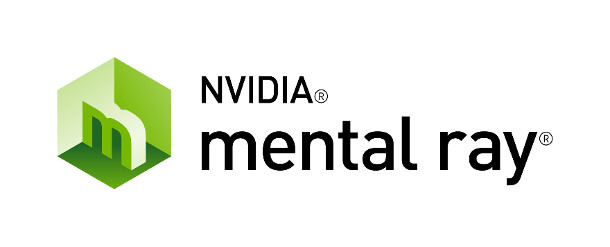Check out the new features in mental ray 3.13
Autodesk has posted a list of the new features in the mental ray 3.13 and iray 4 renderers in 3ds Max 2016. Mental ray is also bundled free with Maya 2016.
The update adds a new GI engine and ambient occlusion pass, enables light importance sampling by default, adds support for the UDIM UV format and deep compositing data, and improves hair rendering.
LIS enabled by default
Top of the changelog for mental ray 3.13 is that light importance sampling is now enabled by default. The technique improves image quality and reduces render times in scenes with physically plausible lighting.
Legacy scenes will be converted automatically, which may mean some traditional light sources are excluded.
New CPU-only GI engine, new one-click AO pass
The update also introduces a new GI engine – interestingly, replacing the old experimental GPU solution with a CPU-based implementation (GPU support is planned again for future releases).
The new engine uses a brute-force algorithm without caching for “uncompromising and consistent quality” and ease of use, so it will be interesting to see what that does to render times.
Motion blur is suppported, as are custom shading effects like lens distortion, DoF, volumetrics and SSS, along with all of the indirect lighting features of traditional final gathering workflows; caustics currently aren’t.
There is also now a built-in Ambient Occlusion pass, which can be calculated in parallel with the beauty pass without having to edit the scene or reassign shaders specifically for AO.
Again, it’s a brute-force calculation without caching, but if you’re using one of Nvidia’s CUDA cards, you can run the calculation on the GPU using the same algorithm as the CPU version.
Support for UDIM, deep compositing, improved hair rendering
In terms of pipeline integration, there’s a new mib_tiled_texture shader which can process textures using the UDIM indexing convention used in tools like Mari.
For deep compositing, output can be saved in the DeepTile form of the OpenEXR 2.0 file format; while mental ray’s native OpenEXR integration is now based on version 2.2 of the library.
The implementation of Alembic has also been updated to the latest version of the library, which adds – among other things – support for creating mental ray hair from Alembic’s ICurves.
Mental ray’s own Human Hair Shader has also been updated; and there is a separate BSDF-based hair shader.
There are also a few other features and changes to the Scene Description Language, which you can read about via the link at the foot of the story.
Changes to iray
Mental ray 3.13 also now supports materials in Nvidia’s MDL format, which should ensure consistent results between mental ray and iray, when rendering using either the CPU or GPU.
Iray itself is updated to version 4, though we aren’t sure how that relates to the recently announced Iray 2015.
Autodesk’s documentation only notes that the update improves stability in multi-GPU and CPU/GPU setups, and supports the newest Nvidia GPU architectures.
Can now be updated independently of the host software
Mental ray 3.13 and iray are integrated into 3ds Max 2016. As of the 2016 release, mental ray is no longer installed by default as part of Maya, but the renderer still comes bundled for free.
That latter change reflects another interesting new feature of mental ray 3.13: that it can now be delivered as a dynamic library, enabling users to update it independently of the host application.
That puts mental ray on the same footing as other third-party renderers for Maya, like V-Ray and Arnold: a change of status that Autodesk desribes as its new “open rendering policy“.
Pricing and availability
Pricing for standalone licences of mental ray starts at $695 when buying directly from Nvidia.
Read a full list of the new features in mental ray 3.13 and iray 4 on Autodesk’s website
Visit Nvidia’s mental ray product website
(At time of posting, still listing details for mental ray 3.12)

